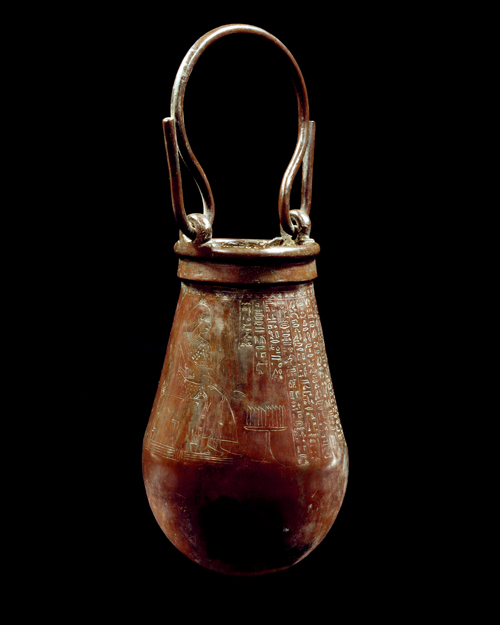
© 2000 Musée du Louvre / Georges Poncet
Late Period, 664-332 BC
Bronze
H.: 24 cm; diam.: 17 cm
Department of Egyptian Antiquities, Musée du Louvre
(N 908 C)
Around 1000 BC there appeared bronze recipients used for storing and pouring liquids—water, wine or milk—during funerary rites. Given their shape, these jars are called situlas, from the Latin situla, little bucket. This one has an engraved image showing its use during the funeral ceremony, beneath the star-studded hieroglyph of the sky. Pa-Khel-Khonsu, the beneficiary of these rites, is shown seated on a chair, itself set on a mat. He is dressed in a panther skin, indicating his membership in the priesthood, in this case in the service of the god Amun at Karnak. He sits before a table covered with food, toward which he reaches. This image seems to have been copied from older models.
As the text explains, he is receiving a libation of cool water and an offering of incense from his son, whose name and titles are engraved above him. The stream of water pours onto an offering table, here represented by the symbol for “offering” (hetep) and two loaves of bread set on edge (as found on real offering tables). The long text in the columns in front of Pa-Khel-Khonsu is a lengthy speech uttered by the god Osiris, employing formulas used in several religious rituals, including daily divine worship and the “opening of the mouth” ceremony, both of which involved pouring a libation to the statue of a god or the deceased.